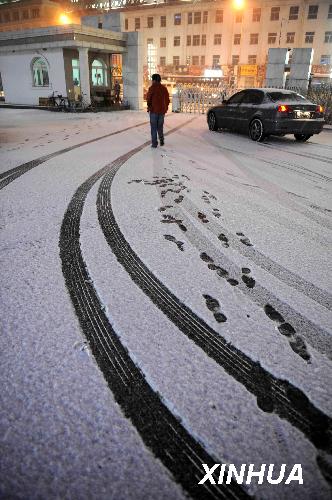Rain and snow are likely to hit most parts of the country in the following 10 days, the China Meteorological Administration (CMA) said yesterday.
 |
|
Hohhot, the capital of the Inner Mongolian Autonomous Region, welcomes a snowfall March 2, 2009. Snow has hit parts of Central China and will continue in the coming days.
|
The administration added that a fresh round of snowfall is also expected in Northeast China.
"Moderate to heavy rainfall - 30 to 150 mm - is expected on Thursday and Friday, which will prove a relief from the prolonged drought to some extent," Chen Zhenlin, deputy director of CMA's forecasting service and disaster mitigation department, told reporters.
He said the rain will cause temperatures to drop by 2 to 4 C, with cloudy and cold conditions expected for 3 to 5 days in some regions.
In the next three days, a cold front will hit northern regions, bringing 1 to 3 mm of snow to Shandong and Liaoning provinces, Chen said, adding the temperature in some regions is expected to see a drop of at least 8 C.
The CMA warned that the rain and snow are not good for spring sowing and farmers should fertilize the fields scientifically and avoid wheat diseases.
According to statistics from the CMA, the average temperature in the country this winter is 2.6 C, about 1.7 C higher than usual, while the average amount of precipitation is 28.1 mm, about 10.1 mm less than usual, with Guangdong and Guangxi witnessing a record low.
Due to the high temperature and low rainfall, China has witnessed its worst drought in more than five decades, which at one point, has affected about 10.7 million hectares of farmland, leaving at least 3.46 million people short of water, the Ministry of Agriculture said.
Experts warned that the persistent drought in North China might trigger forest fires and make the spring sandstorm worse, causing difficulty for transportation.
Yang Guiming, the top forecaster of CMA, said a major sandstorm was expected at the end of March or early April.
This year's first sandstorm hit North China's Inner Mongolia autonomous region on Feb 19, reducing visibility to 500 to 800 m.